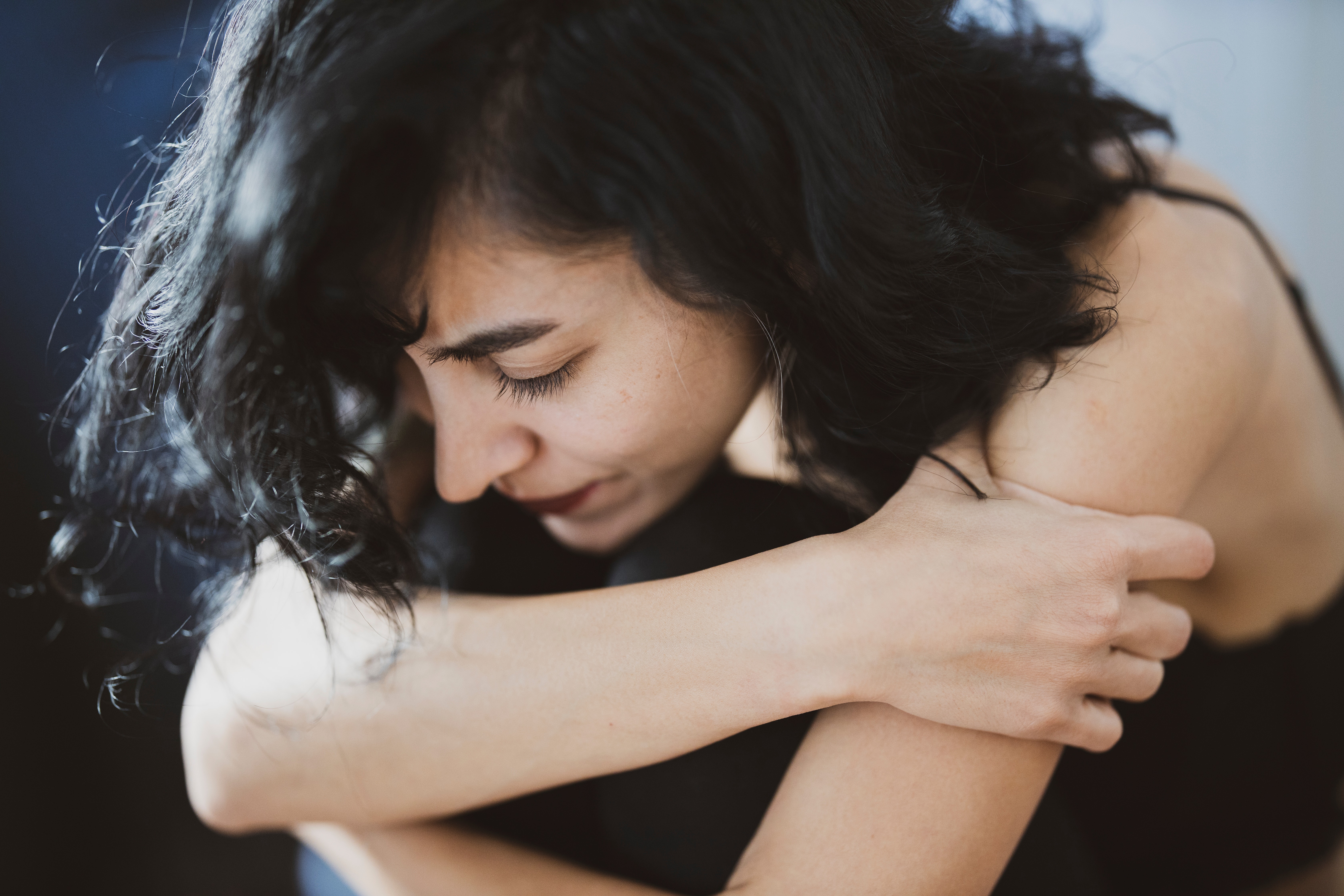- Home
- Blogs
- Pregnancy
- Experience the Miracle of Birth: A Guide to Handling Labour Pain with Confidence
- Experience t...
Experience the Miracle of Birth: A Guide to Handling Labour Pain with Confidence

Labour pain is an integral part of the miraculous journey of childbirth. As expectant parents, it's natural to have questions and concerns about how to handle this unique sensation. In this comprehensive guide, we will walk you through practical tips, expert advice, and effective techniques to help you navigate labour pain with confidence.
From relaxation exercises and breathing techniques to pain management options and support strategies, we've got you covered. Get ready to embrace this transformative experience and discover the tools you need to make your birthing journey a positive and empowering one.
Stages of Labour (Labour ke stages):
Labour pain is a natural part of the childbirth process and typically occurs in three distinct stages. Understanding these labour pain stages can help pregnant women prepare for what lies ahead.
Stage 1: Early Labour
During this initial labour pain early symptoms, the cervix gradually thins out and dilates. Contractions may begin irregularly and become progressively stronger and closer together. Early labour can last for several hours or even days. It is advisable for pregnant women to rest, eat light meals, and engage in relaxation techniques to conserve energy.
Stage 2: Active Labour
In the active labour stage, the cervix continues to dilate, typically from 4 to 7 centimeters. Contractions in this labor pain stage become more intense, lasting longer and occurring closer together. Women may experience increased pressure and the urge to push. It is essential to remain focused, practice breathing techniques, and rely on the support of healthcare providers and birth companions. Understanding the different labour pain stages and seeking support can empower women during this critical phase of childbirth.
Stage 3: Transition and Delivery
This is the last and most painful stage among other labour pain stages. The final stage, known as the transition, marks the completion of cervical dilation (10 centimeters) and the beginning of the delivery phase. Contractions reach their peak intensity, and the baby's head descends further into the birth canal. Remaining calm, using relaxation techniques, and staying motivated are crucial during this stage.
Symptoms of Labour (Labour Pain ke Lakshan):
Recognizing the labour pain early symptoms (Labour pain hone ke symptoms), is essential for expectant mothers.
- Regular and increasingly intense contractions impact labour pain frequency
- Contractions starting in the lower back and abdomen
- Spreading of contractions throughout the uterus
- Tightening sensation in the abdomen
- Expulsion of the mucus plug, possibly tinged with blood
- Rupture of the amniotic sac, leading to the release of fluid
- Intensifying labor pain
- More frequent and longer duration of contractions
- Consistent and regular contractions as a key indicator for seeking medical attention.
These labour pain start symptoms vary greatly for every woman hence should be handled accordingly.
Labour Pain Relief Methods (Labour Pain Kam Karne ke Upay)
Labor pain is unique to each woman, and the level of discomfort experienced varies. Fortunately, several labour pain tips and methods can help manage and alleviate labour pain. It is advisable to discuss these options with healthcare professionals, join childbirth classes that prepare you for labour pain and create a personalized pain management plan.
Natural Techniques
- Breathing exercises: Deep breathing, patterned breathing, and focused breathing techniques can help women relax and cope with labour pain frequency.
- Position changes: Changing labour pain position, frequently during labour can relieve pressure and encourage optimal fetal positioning.
- Water immersion: Soaking in a warm bath or using a birthing pool can provide soothing relief and promote relaxation.
- Massage and counter-pressure: Gentle massages and applying pressure on specific areas can alleviate labour pain frequency, tension and provide comfort.

Pharmacological Options
- Nitrous oxide: Also known as "laughing gas," nitrous oxide can be inhaled during contractions to reduce pain and anxiety.
- Epidural analgesia: Administered by an anesthesiologist, epidural analgesia provides continuous pain relief by numbing the lower body.
- Systemic medications: Intravenous medications, such as opioids, can provide temporary pain relief and help women relax between contractions.
Benefits of Lamaze Classes (Lamaze Classes ke Fayede):
Lamaze classes, a popular childbirth education program, offer expectant mothers and their partners valuable knowledge and techniques to navigate labour with confidence.
Here are some benefits of enrolling in Lamaze classes:
Education and Information
Lamaze classes provide comprehensive information about the stages of labour, pain management options, medical interventions, and the importance of emotional support. By understanding labour pain position and labour pain tips women feel empowered to make informed decisions about their care.
Breathing and Relaxation Techniques
Lamaze classes emphasize the use of specific breathing and relaxation techniques to manage pain and promote a sense of control during labour. Techniques like slow-paced breathing, patterned breathing, and deep abdominal breathing help women stay focused, reduce tension, and cope with contractions effectively.
Partner Involvement and Support
Lamaze classes encourage partners to actively participate in the childbirth process. Partners learn how to provide physical and emotional support, offer comfort measures, and advocate for the mother's needs during labor pain. This involvement fosters a stronger bond and enhances the overall birth experience.
Building Confidence and Reducing Anxiety
Childbirth can be an overwhelming experience, especially for first-time mothers. Lamaze classes create a supportive environment where women can express their fears and concerns. Through group discussions, role-playing, and practice sessions, women gain confidence in their ability to handle labour and manage pain, which helps reduce anxiety and stress.
Informing about Medical Interventions and Decision-making
While Lamaze classes promote natural childbirth, they also educate women about medical interventions that may become necessary during labor pain. Understanding the potential interventions, their benefits, risks, and alternatives enables women to make informed decisions and actively participate in their birth plan.

Creating a Supportive Network
Attending Lamaze classes allows expectant mothers to connect with other women who are going through similar experiences. The classes provide a platform for sharing concerns, stories, and advice, creating a supportive network of individuals who can offer encouragement and guidance during pregnancy and beyond.
Summing Up
Labour pain is a significant part of the childbirth process, but being well-informed and prepared can help pregnant women approach it with confidence. Understanding labour pain measurement, exploring pain relief methods, and enrolling in Lamaze classes are essential steps towards achieving an empowered birth experience.
By equipping themselves with labour pain tips, labour pain facts, learning effective pain management techniques like Lamaze classes, and establishing a support network, women can navigate the journey of childbirth with greater control, comfort, and satisfaction.
Remember, each woman's experience with labour pain is unique, and what works for one may not work for another. It is crucial for expectant mothers to discuss their preferences and concerns with healthcare professionals, attend childbirth education classes, and make choices that align with their individual needs and birth goals.
If you still have any query you can reach out to us anytime @+91-8929345355.
FAQ
Labour pain starts in which week?
Labour pain typically starts around the 37th to 40th week of pregnancy. You can feel labour pain start symptoms (labour pain ke lakshan) before the final stage.
Labour pain kaha hota hai aur labour pain kitna hota hai?
Labour pain primarily occurs in the lower abdomen and pelvic region. The severity and duration of labour pain can vary for each woman. The pain gradually increases in intensity as the contractions become stronger and closer together. (Labour pain lower abdomen and pelvic region me hota hai. Labour pain ka severity and duration varies for every woman. Ye dard dheere-dheere badta hai aur contractions bhi badte hai.)
Labour pain badhane ki medicine aur labour pain badhane ke liye kya karen?
To increase labour pain, there are several methods that can be tried.
- Staying active and engaging in movements like walking or squatting can help intensify contractions.
- Changing labour pain positions frequently during labour can enhance the intensity of contractions.
- Immersion in water, such as taking a warm bath or using a birthing pool, can initially provide relaxation but may also intensify contractions.
Additionally, non-medical pain relief techniques like relaxation exercises and massage can be used to manage pain and potentially increase its intensity.
(Labour pain badhane ke upay:
- Apne body ko active rakhe and different types of activity try kare like walking or squatting.
- Labour pain positions frequently change karne se labour pain contractions me madad milta hai.
- Warm bath or birthing pool se bhi aapko labour pain start karne me madad milega.)
Labour pain last for how long?
Labour pain can last for several hours to even a day or more, varying for each woman.
Labour pain contraction time?
Labour pain contractions typically start mild and gradually increase in intensity, becoming stronger and closer together over time.
Labour pain where does it start?
Labour pain primarily starts in the lower abdomen and pelvic region.
Labor pains symptoms when to go to hospital?
When experiencing regular and strong contractions that occur at regular intervals and are accompanied by other signs of labor, such as the rupture of the amniotic sac or bloody show, it is usually recommended to go to the hospital or contact a healthcare professional for further guidance.
Leave a Comment
Blogs
Popular Posts
Get the latest from Newmi
Subscribe to get Email Updates!
Thanks for subscribe.
Your response has been recorded.
COPYRIGHT © 2025 KA HEALTHCARE PVT LTD - ALL RIGHTS RESERVED.
Disclaimer: NEWMI CARE does not cater to any medical/Pregnancy or psychiatric emergencies. If you are in a life-threatening situation, please do NOT use this site. If you are feeling suicidal, we recommend you call a suicide prevention helpline or go to your nearest hospital.

0 Comment